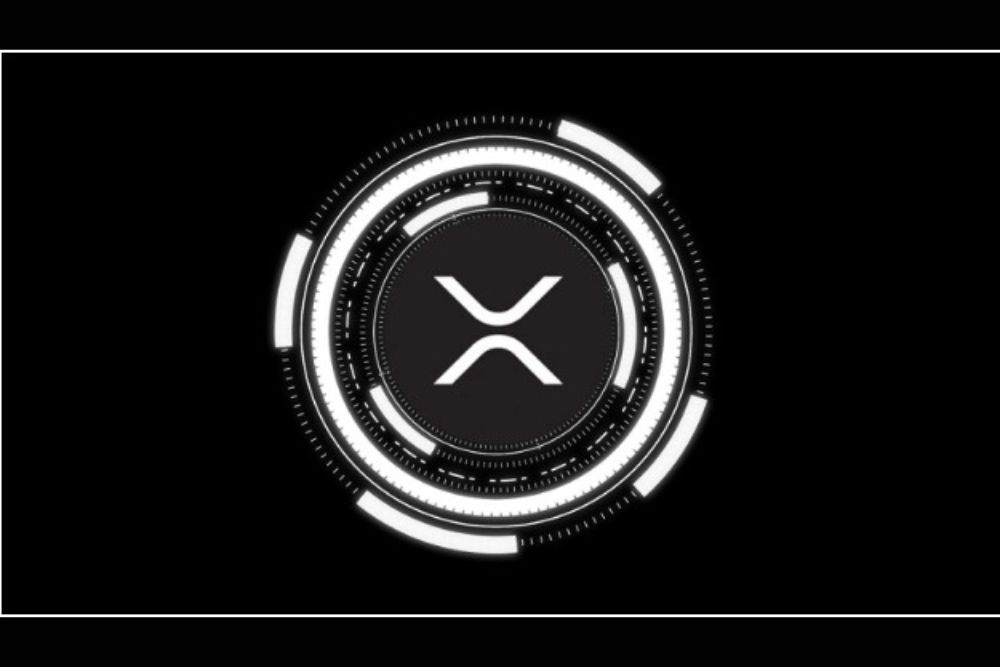嵌入式软件笔试(转载)
时间:2009-05-12 来源:hubo214
时间:2005-06-25
地点:深圳南山区
方式:闭卷,写程序
1、将一个字符串逆序
2、将一个链表逆序
3、计算一个字节里(byte)里面有多少bit被置1
4、搜索给定的字节(byte)
5、在一个字符串中找到可能的最长的子字符串
6、字符串转换为整数
7、整数转换为字符串
1、将一个字符串逆序
2、将一个链表逆序
3、计算一个字节里(byte)里面有多少bit被置1
4、搜索给定的字节(byte)
5、在一个字符串中找到可能的最长的子字符串
6、字符串转换为整数
7、整数转换为字符串 /*
* 题目:将一个字符串逆序
* 完成时间:2006.9.30深圳极讯网吧
* 版权归刘志强所有
* 描述:写本程序的目的是希望练一下手,希望下午去面试能成功,不希望国庆节之后再去找工作拉!
*/
#include <iostream>
using namespace std;
//#define NULL ((void *)0)
char * mystrrev(char * const dest,const char * const src)
{
if (dest==NULL && src==NULL)
return NULL; char *addr = dest;
int val_len = strlen(src);
dest[val_len] = '\0';
int i;
for (i=0; i<val_len; i++)
{
*(dest+i) = *(src+val_len-i-1);
} return addr;
}
main()
{
char *str="asdfa";
char *str1=NULL;
str1 = (char *)malloc(20);
if (str1 == NULL)
cout<<"malloc failed"; cout<<mystrrev(str1,str);
free(str1);
str1=NULL;//杜绝野指针
}
p=head;
q=p->next;
while(q!=NULL)
{
temp=q->next;
q->next=p;
p=q;
q=temp;
}
这样增加个辅助的指针就行乐。
ok 通过编译的代码:
#include <stdio.h>
#include <ctype.h>
#include <stdlib.h> typedef struct List{
int data;
struct List *next;
}List; List *list_create(void)
{
struct List *head,*tail,*p;
int e;
head=(List *)malloc(sizeof(List));
tail=head;
printf("\nList Create,input numbers(end of 0):");
scanf("%d",&e);
while(e){
p=(List *)malloc(sizeof(List));
p->data=e;
tail->next=p;
tail=p;
scanf("%d",&e);} tail->next=NULL;
return head;
} List *list_reverse(List *head)
{
List *p,*q,*r;
p=head;
q=p->next;
while(q!=NULL)
{
r=q->next;
q->next=p;
p=q;
q=r;
} head->next=NULL;
head=p;
return head;
} void main(void)
{
struct List *head,*p;
int d;
head=list_create();
printf("\n");
for(p=head->next;p;p=p->next)
printf("--%d--",p->data); head=list_reverse(head);
printf("\n");
for(p=head;p->next;p=p->next)
printf("--%d--",p->data);
} 编写函数数N个BYTE的数据中有多少位是1。
解:此题按步骤解:先定位到某一个BYTE数据;再计算其中有多少个1。叠加得解。 #incluede<iostream>
#define N 10
//定义BYTE类型别名
#ifndef BYTE
typedef unsigned char BYTE;
#endif int comb(BYTE b[],int n)
{
int count=0;
int bi,bj;
BYTE cc=1,tt; //历遍到第bi个BYTE数据
for(bi=0;bi<n;bi++)
{
//计算该BYTE的8个bit中有多少个1
tt=b[bi];
for(bj=0;bj<8;bj++)
{
//与1相与或模2结果是否是1?测试当前bit是否为1
//if(tt%2==1)
if((tt&cc)==1)
{
count++;
}
//右移一位或除以2,效果相同
//tt=tt>>1;
tt=tt/2;
}
}
return count;
} //测试
int main()
{
BYTE b[10]={3,3,3,11,1,1,1,1,1,1};
cout<<comb(b,N)<<endl;
return 0;
}
1。编写一个 C 函数,该函数在一个字符串中找到可能的最长的子字符串,且该字符串是由同一字符组成的。
char * search(char *cpSource, char ch)
{
char *cpTemp=NULL, *cpDest=NULL;
int iTemp, iCount=0;
while(*cpSource)
{
if(*cpSource == ch)
{
iTemp = 0;
cpTemp = cpSource;
while(*cpSource == ch)
++iTemp, ++cpSource;
if(iTemp > iCount)
iCount = iTemp, cpDest = cpTemp;
if(!*cpSource)
break;
}
++cpSource;
}
return cpDest;
}
#include <stdio.h>
#include <string.h> // // 自定义函数MyAtoI // 实现整数字符串转换为证书输出 // 程序不检查字符串的正确性,请用户在调用前检查 // int MyAtoI(char str[])
{
int i;
int weight = 1; // 权重
int rtn = 0; // 用作返回 for(i = strlen(str) - 1; i >= 0; i--)
{
rtn += (str[i] - '0')* weight; //
weight *= 10; // 增重
} return rtn;
} void main()
{
char str[32]; printf("Input a string :");
gets(str); printf("%d\n", MyAtoI(str));
} #include<stdio.h>
#include<string.h>
void reverse(char s[])
{ //字符串反转
int c, i=0, j;
for(j=strlen(s)-1;i<j;j--)
{ c=s[i];
s[i]=s[j];
s[j]=c;
i++;
}
}
void IntegerToString(char s[],int n)
{ int i=0,sign;
if((sign=n)<0)//如果是负数,先转成正数
n=-n;
do //从个位开始变成字符,直到最高位,最后应该反转
{ s[i++]=n%10+'0';
}while((n=n/10)>0);
//如果是负数,补上负号
if(sign<0)
s[i++]='-';
s[i]='\0';//字符串结束
reverse(s);
}
void main()
{ int m;
char c[100];
printf("请输入整数m: ");
scanf("%d",&m);
IntegerToString(c,m);
printf("integer = %d string = %s\n", m, c);
}
文章出处:http://www.diybl.com/course/6_system/linux/Linuxxl/2008910/141721.html
地点:深圳南山区
方式:闭卷,写程序
1、将一个字符串逆序
2、将一个链表逆序
3、计算一个字节里(byte)里面有多少bit被置1
4、搜索给定的字节(byte)
5、在一个字符串中找到可能的最长的子字符串
6、字符串转换为整数
7、整数转换为字符串
1、将一个字符串逆序
2、将一个链表逆序
3、计算一个字节里(byte)里面有多少bit被置1
4、搜索给定的字节(byte)
5、在一个字符串中找到可能的最长的子字符串
6、字符串转换为整数
7、整数转换为字符串 /*
* 题目:将一个字符串逆序
* 完成时间:2006.9.30深圳极讯网吧
* 版权归刘志强所有
* 描述:写本程序的目的是希望练一下手,希望下午去面试能成功,不希望国庆节之后再去找工作拉!
*/
#include <iostream>
using namespace std;
//#define NULL ((void *)0)
char * mystrrev(char * const dest,const char * const src)
{
if (dest==NULL && src==NULL)
return NULL; char *addr = dest;
int val_len = strlen(src);
dest[val_len] = '\0';
int i;
for (i=0; i<val_len; i++)
{
*(dest+i) = *(src+val_len-i-1);
} return addr;
}
main()
{
char *str="asdfa";
char *str1=NULL;
str1 = (char *)malloc(20);
if (str1 == NULL)
cout<<"malloc failed"; cout<<mystrrev(str1,str);
free(str1);
str1=NULL;//杜绝野指针
}
p=head;
q=p->next;
while(q!=NULL)
{
temp=q->next;
q->next=p;
p=q;
q=temp;
}
这样增加个辅助的指针就行乐。
ok 通过编译的代码:
#include <stdio.h>
#include <ctype.h>
#include <stdlib.h> typedef struct List{
int data;
struct List *next;
}List; List *list_create(void)
{
struct List *head,*tail,*p;
int e;
head=(List *)malloc(sizeof(List));
tail=head;
printf("\nList Create,input numbers(end of 0):");
scanf("%d",&e);
while(e){
p=(List *)malloc(sizeof(List));
p->data=e;
tail->next=p;
tail=p;
scanf("%d",&e);} tail->next=NULL;
return head;
} List *list_reverse(List *head)
{
List *p,*q,*r;
p=head;
q=p->next;
while(q!=NULL)
{
r=q->next;
q->next=p;
p=q;
q=r;
} head->next=NULL;
head=p;
return head;
} void main(void)
{
struct List *head,*p;
int d;
head=list_create();
printf("\n");
for(p=head->next;p;p=p->next)
printf("--%d--",p->data); head=list_reverse(head);
printf("\n");
for(p=head;p->next;p=p->next)
printf("--%d--",p->data);
} 编写函数数N个BYTE的数据中有多少位是1。
解:此题按步骤解:先定位到某一个BYTE数据;再计算其中有多少个1。叠加得解。 #incluede<iostream>
#define N 10
//定义BYTE类型别名
#ifndef BYTE
typedef unsigned char BYTE;
#endif int comb(BYTE b[],int n)
{
int count=0;
int bi,bj;
BYTE cc=1,tt; //历遍到第bi个BYTE数据
for(bi=0;bi<n;bi++)
{
//计算该BYTE的8个bit中有多少个1
tt=b[bi];
for(bj=0;bj<8;bj++)
{
//与1相与或模2结果是否是1?测试当前bit是否为1
//if(tt%2==1)
if((tt&cc)==1)
{
count++;
}
//右移一位或除以2,效果相同
//tt=tt>>1;
tt=tt/2;
}
}
return count;
} //测试
int main()
{
BYTE b[10]={3,3,3,11,1,1,1,1,1,1};
cout<<comb(b,N)<<endl;
return 0;
}
1。编写一个 C 函数,该函数在一个字符串中找到可能的最长的子字符串,且该字符串是由同一字符组成的。
char * search(char *cpSource, char ch)
{
char *cpTemp=NULL, *cpDest=NULL;
int iTemp, iCount=0;
while(*cpSource)
{
if(*cpSource == ch)
{
iTemp = 0;
cpTemp = cpSource;
while(*cpSource == ch)
++iTemp, ++cpSource;
if(iTemp > iCount)
iCount = iTemp, cpDest = cpTemp;
if(!*cpSource)
break;
}
++cpSource;
}
return cpDest;
}
#include <stdio.h>
#include <string.h> // // 自定义函数MyAtoI // 实现整数字符串转换为证书输出 // 程序不检查字符串的正确性,请用户在调用前检查 // int MyAtoI(char str[])
{
int i;
int weight = 1; // 权重
int rtn = 0; // 用作返回 for(i = strlen(str) - 1; i >= 0; i--)
{
rtn += (str[i] - '0')* weight; //
weight *= 10; // 增重
} return rtn;
} void main()
{
char str[32]; printf("Input a string :");
gets(str); printf("%d\n", MyAtoI(str));
} #include<stdio.h>
#include<string.h>
void reverse(char s[])
{ //字符串反转
int c, i=0, j;
for(j=strlen(s)-1;i<j;j--)
{ c=s[i];
s[i]=s[j];
s[j]=c;
i++;
}
}
void IntegerToString(char s[],int n)
{ int i=0,sign;
if((sign=n)<0)//如果是负数,先转成正数
n=-n;
do //从个位开始变成字符,直到最高位,最后应该反转
{ s[i++]=n%10+'0';
}while((n=n/10)>0);
//如果是负数,补上负号
if(sign<0)
s[i++]='-';
s[i]='\0';//字符串结束
reverse(s);
}
void main()
{ int m;
char c[100];
printf("请输入整数m: ");
scanf("%d",&m);
IntegerToString(c,m);
printf("integer = %d string = %s\n", m, c);
}
文章出处:http://www.diybl.com/course/6_system/linux/Linuxxl/2008910/141721.html
相关阅读 更多 +










